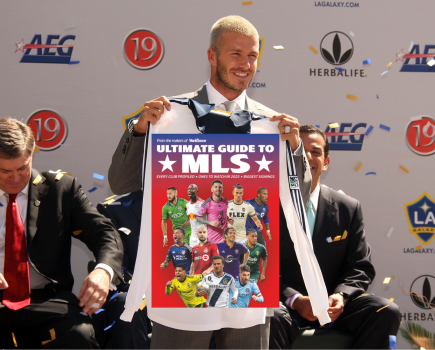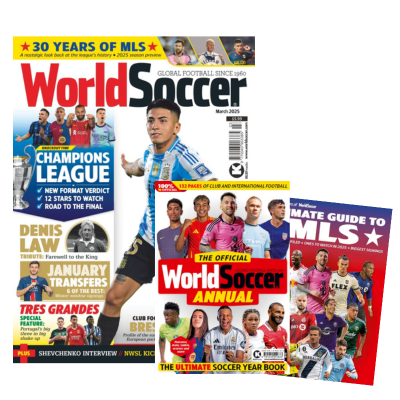By 1969 the North American Soccer League was still struggling to find its feet. The 1968 season represented a marriage of convenience between the National Professional Soccer League (which was not sanctioned but did have a television deal with CBS) and the United Soccer Association, in which the clubs were represented by teams airlifted in from Europe and South America.
Atlanta Chiefs won the first NASL championship under the guidance of Phil Woosnam, a Welsh-born former West Ham United and Aston Villa forward who oversaw not only the Chiefs’ run through the playoffs but their humiliation of Manchester City.
Ten NASL teams folded after the 1968 season and a further two elected to drop down to semi-professional football. Only five remained, and they selected Woosnam as the league’s new executive director. It wasn’t the last dramatic turn of Woosnam’s career in the United States of America and, in truth, it probably wasn’t the most significant. But the NASL in 1969 was faltering badly after just one season and it was the leadership of its 1968 Coach of the Year that kept the league alive into the 1970s, the decade that would see it make a truly global impact.
Financially, the league and its teams were shot. Woosnam quickly set about cutting costs and applying a ruthless pragmatism to the second season of the NASL. The surviving quintet were ordered to rearrange their financial liabilities, slashing their player salary budgets and operating costs in order to keep themselves and the league afloat through 1969.
The season proper was part of a bridge between two eras, and not much more. With only five teams in competition the season was short, awkward and largely free of noteworthy drama. Kaizer Motaung, the Atlanta Chiefs’ South African forward named Rookie of the Year in 1968, graduated to top NASL goalscorer in ’69. He famously went on to form one of Africa’s most famous clubs, the modestly titled Kaizer Chiefs. The league’s Most Value Player that season was Kansas City Spurs’ Cirilo Fernandez, known as Pepe, who had also scored as many goals for San Diego Toros (30) in 1968 as official top goalscorer John Kowalik.
Motaung’s successor as Rookie of the Year was Siegfried Stritzl, a 25-year-old Yugoslavian midfielder for Baltimore Bays. His football development took place not in the traditional youth ranks of either Europe or the United States, but in the little known German American Soccer League (GASL), where he represented Blau-Weiss Gottschee in New York for two spells. The first, in which Stritzl won the GASL championship in 1963, was the period that culminated in his signing for the Bays for a brief but impressive season. The second took place in 1970 before Stritzl made his way to what would become an altogether more famous New York club: Steve Ross’ New York Cosmos.
The European influence on US soccer was far from a new phenomenon and was particularly potent in 1969. Stritzl was joined on the year’s All-Star list by Manfred Seissler, a German-born forward who played alongside Fernandez for the title-winning Spurs and, like Stritzl, would go on to be capped by the United States. US caps would also be awarded to Ilija Mitic, who was born in Belgrade and played at Under-23 level for Yugoslavia. He was a prominent figure in the earliest years of the NASL, scoring 18 goals for Oakland Clippers in ’68 and 11 for Dallas Tornado in 1969.
But the NASL season began not with the regular fixtures between the five clubs but a remarkable competition that had more in common with the old United Soccer Association than with the NASL’s debut season. With the dire state of the league before his appointment, and his financial demands making it difficult to build a squad within tight time constraints, Woosnam’s solution drew heavily upon NASL’s ill-fated predecessor. NASL’s 1969 kicked off with the International Cup, in which each of the league’s five teams was represented by a wholly imported side from England or Scotland.
It wasn’t just the idea of transplanting European teams into US football markets that was adopted from the USA. Two of the USA partnerships were revived: Wolverhampton Wanderers became Kansas City once again, while Dundee United returned as Dallas. Woosnam’s links with Villa produced a familiar relationship between the Birmingham club and the Chiefs over the years, and the Villains were the obvious club to stand in for the Chiefs in the International Cup of 1969. Kilmarnock became St Louis Stars, but far more notable was the introduction of a famous East London outfit in the American football heartlands of Baltimore.
The Maryland side were represented by West Ham United, which in the late 1960s naturally meant that three reigning world champions ran out at the Memorial Stadium in the colours of the Bays. World Cup winning England skipper Bobby Moore, World Cup final hat-trick scorer Geoff Hurst and England’s other goalscorer in the final, Martin Peters, were all West Ham players when they won football’s top prize, and all headed for Baltimore to represent the Bays in the International Cup. A young Trevor Brooking was the man who stole the limelight in front of goal, banging in six goals in the eight games of the mini-season, finishing as the joint second highest goalscorer.
Like Brooking, Baltimore had to settle for second, beaten emphatically out of first place by Kansas City. Bill McGarry’s Wolves didn’t lose a single game as the Spurs in the eight-match campaign, winning six as they racked up 25 goals thanks in large part to Hugh Curran. Curran had only joined the Black Country club in January 1969 and scored six for the Spurs, ably supported by three from Mike Bailey and four from a very familiar Molineux name, Derek Dougan.
The idea of importing players temporarily is not unique in sport, as evidenced in recent years by cricket’s Indian Premier League and indeed by its mythical footballing sibling. But the transplanting of entire teams is something different, something otherworldly, and yet in the lengthy history of soccer in America it just doesn’t seem out of place.
Without the USA-inspired International Cup – regardless of its extremely disappointing attendances and the demise of the Bays – the North American Soccer League might not have survived; it certainly would have evolved differently had Woosnam chosen to press on with an orthodox season with just five teams and lost the confidence of his peers as a result.
1969 was not a vintage year for the game in America but it was the first under the tutelage of one of its most influential post-war protagonists and he managed to guide it through stormy waters before the NASL was rebuilt in the 1970s and went on to reach heights unimaginable before inevitably crashing back to earth.
By Chris Nee
This article originally appeared in In Bed with Maradona







